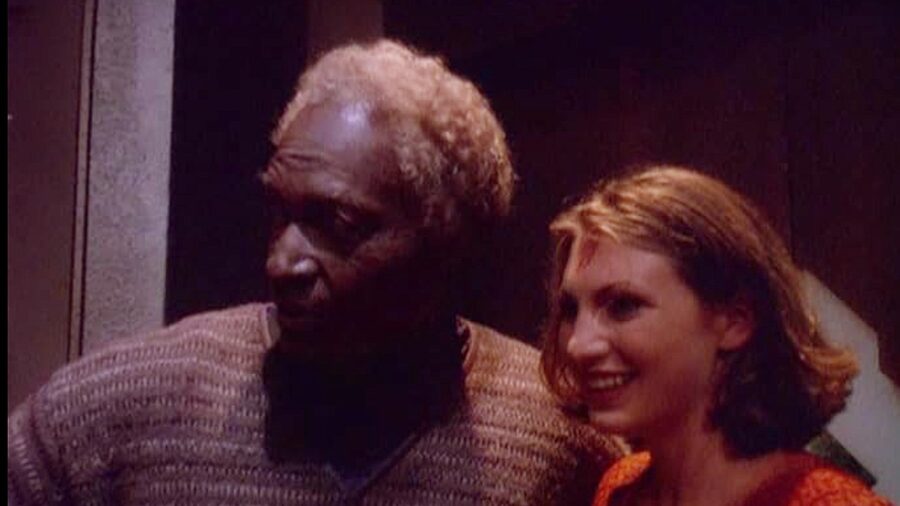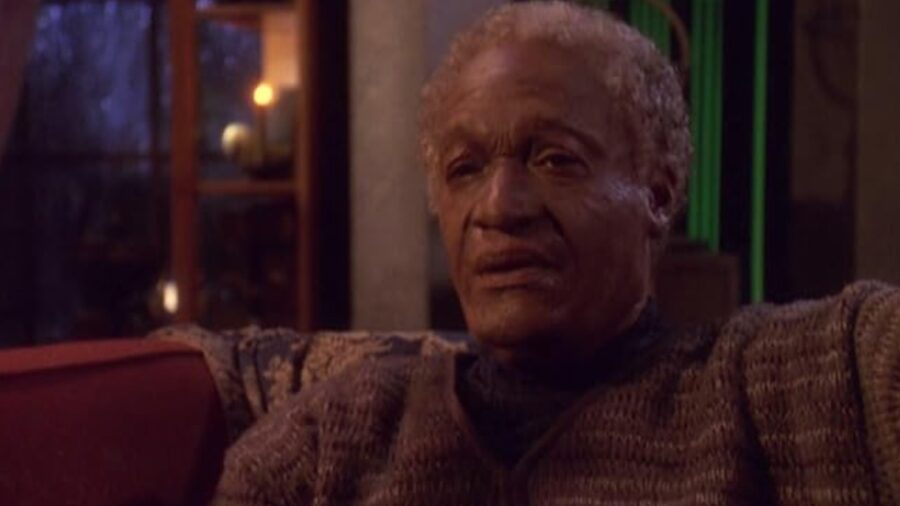Star Trek’s Best Episode Inspired By The Most Reclusive Author

One of the reasons we champion Deep Space Nine as the best show in the Trek franchise is that it was never afraid to take big, emotional swings with its storytelling. Arguably the best example of this is the Star Trek episode “The Visitor,” in which Benjamin Sisko becomes unstuck in time and sees his son grow over decades through very infrequent visits. There is plenty of love about the Star Trek episode guaranteed to make you cry, but here’s a weird fact guaranteed to make you gasp: the premise of the episode was inspired by a most unexpected interview with reclusive author J.D. Salinger.
The First Visitor

To understand how the heck “The Visitor” was inspired by the author of The Catcher in the Rye, we need to review how the episode starts. While fans always remember the timey-wimey adventure that connects father and son throughout time and space, the episode actually begins with a young woman visiting the home of the elderly Jake Sisko (played perfectly by the inimitable Tony Todd). It turns out she is an aspiring writer and huge fan who asks Jake a remarkably loaded question: why did the talented and prolific author stop writing in the first place?
The younger writer, by the way is played by Rachel Robinson–daughter of Andrew Robinson, best known as DS9‘s Garak.
How An Accident Derails Jake’s Life

As this Star Trek episode reveals, the answer to that question is heartbreaking. When he was a young man decades ago, Jake witnessed a freak accident onboard the Defiant that seemingly killed his father. “The Visitor” is mostly about how once Jake began seeing his dad briefly popping in and out of reality, he dedicated his life to finding a way to bring him back–a dedication that cost Jake everything from his writing career to his marriage.
Salinger’s Visitor

Now that you Star Trek fans are up to (warp) speed, let’s cut to the chase: how was “The Visitor” inspired by reclusive author J.D. Salinger? Back in 1969, 16-year-old aspiring playwright James Sadwith managed to find Salinger, and he wanted to ask the famous author for permission to turn The Catcher In the Rye into a school play. Unsurprisingly, Salinger said “no,” but Sadwith did it anyway; when he tracked the author down for the second and final time, Salinger didn’t particularly care about the school play and asked how it went (the audience loved it, especially Sadwith’s performance as Holden Caulfield).
Salinger Vs. Sisko

While Salinger was never unstuck in time and tethered to the Bajoran wormhole (at least, that we know of), the beginning of this Star Trek episode was inspired by Sadwith tracking Salinger to his home. That’s why “The Visitor” begins with a young superfan finding Jack Sisko and asking why he stopped writing. This, too, was an echo of Salinger, who had completely stopped writing in 1965, four years before Sadwith found him.
Jake Dies To Save Another Jake

Part of why we love this crazy Star Trek anecdote is that it proves the literary inspirations for the greatest episodes extend far beyond the texts of William Shakespeare that Picard was so fond of quoting. Of course, there is arguably a bit of Shakespeare’s Hamlet in the conclusion of “The Visitor:” regarding the question of “to be or not to be,” the older Jake emphatically chooses “not to be” and commits suicide in order to save his father (who, it turns out, was tethered to Jake all along) and restore reality as we know it.
Like Hamlet, Jake discovered that “time is out of joint.” Unlike Hamlet, he managed to solve that problem without killing anyone but himself. Good night, sweet prince, and flights of Prophets sing thee to thy rest.












